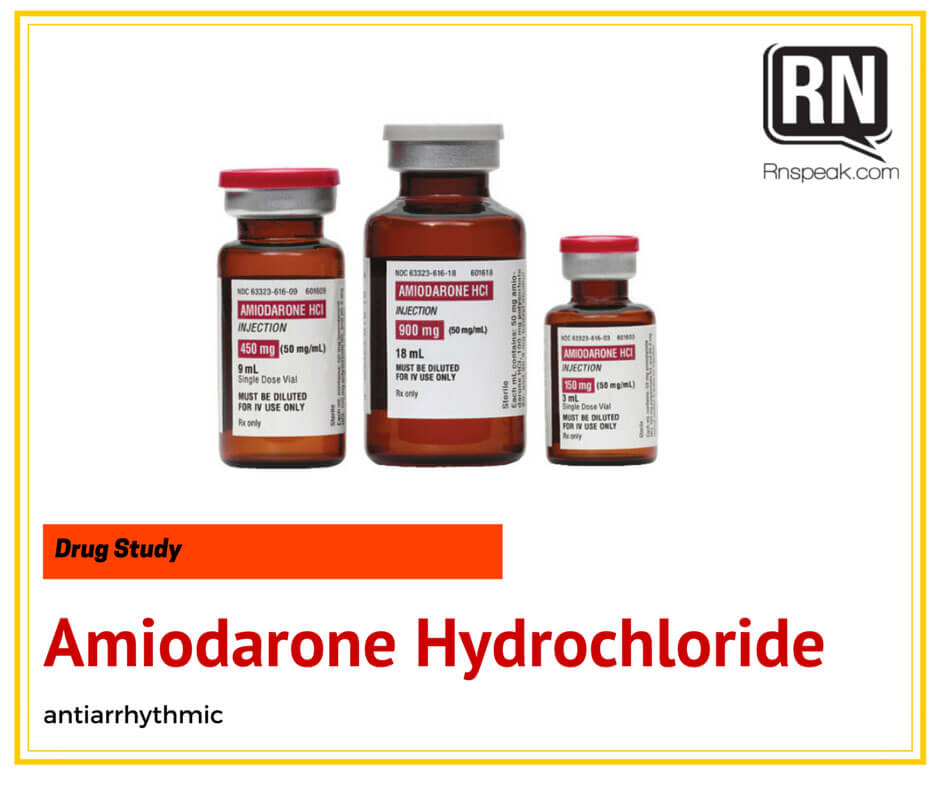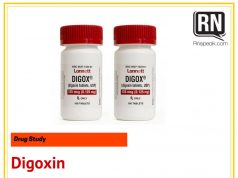
Pronounced as (am-ee-OH-dah-rohn hih-droh-KLOR-ighd), it is therapeutically classified to be a ventricular anti arrhythmic This drug is used for patients who do not respond to other antiarrhythmics.
Brand Names:
- Cordarone
- Pacerone
Indications:
- Premature ventricular fibrillation
- Unstable ventricular tachycardia
- Atrial fibrillation
- Angina
- Hypertrophic cardiomyopathy
- Supraventricular arrhythmias
Dosages:
Adults:
Oral: Loading dose is between 800 to 1,600 mg good for one to three weeks. Maintenance dosage may range between 600 to 800 mg per day. It is advised to use the possible lowest dose in reaching cardiac stability.
I.V. Infusion: A 150 mg loading dose must be given with 10 minutes slowly. For maintenance dose, a 540 mg amiodarone must be run with 18 hours. The rate on the first day of therapy can be increased depending on the situation.
Mechanism of Action:
Since the problem is focused on the rapid beating of the heart which is not effective anymore in supplying the needed blood supply for the whole body, this drug works on cardiac cell membranes directly in order to lengthen the repolarization and refractory period. As it relaxes the smooth muscles, the myocardial blood flow is also ensured to be at its height of function. Aside from that, it also decreases myocardial oxygen consumption and peripheral vascular resistance too.
Pointers in giving amiodarone hydrochloride intravenously:
- A loading dose of 150 mg must be infused for 10 minutes.
- Monitor the cardiac rate and status of the patient in giving amiodarone hydrochloride intravenously.
- Always remember that the initial dose of administration starts in 5mg/kg. It should be mixed with 250mL D5Water.
- The maximum dose a patient can receive within a day is 1.2 grams mixed in a 500mL D5Water.
- Periodic monitoring of the cardiac activity can be done through ECG monitoring or attaching the patient in a cardiac monitor.
- Monitor the patient closely and refer for significant changes since this is a drug that has life threatening adverse reactions. “Gasping syndrome” is common among neonates receiving this drug. Symptoms may include: sudden onset of gasping, low blood pressure and bradycardia.
Drug to drug interactions:
Precipitation may occur when amiodarone is administered together with heparin. Aside from that it is important to note that using evacuated glass containers for admixing may induce precipitation.
Amiodarone with antihypertensive: Hypotension may be rapid.
Amiodarone with beta blockers, calcium channel blockers: May depress the cardiac functioning thus it should be used with caution.
Amiodarone with Digoxin: Digoxin levels should be monitored closely since it amiodarone can increase the serum digoxin levels rapidly with a rate 70% to 100%.
Nursing Process:
Assessment:
- Before the therapy, assess the patient’s vital signs and put more focus on the cardiac activity. For patients with cardiac device implants, check its condition and if it works properly before during and after administration.
- Monitor also the pulmonary, liver and thyroid function tests as it may infer with the expected results.
- Watch out for adverse drug interactions such as: peripheral neuropathy, abnormal gait, ataxia, dizziness, headache, fatigue. Bradycardia can occur followed with hypotension and eventual sinus arrest. Photosensitivity is an expected adverse reaction.
Nursing Diagnoses
- Decreased cardiac output related to ventricular arrhythmia
- Risk for injury related to adverse reactions of the drug
Planning and Implementation:
- Close monitoring is an ongoing process all throughout the therapy. An updated data is a must.
- For oral dosages, each dose should be taken with meals since it is a gastric irritant.
- Encourage the patient to verbalize any discomfort since this drug may have several adverse reactions.
- On the beginning of the therapy, IV infusion should be monitored well since it may affect the kidney’s normal functioning resulting to hepatocellular necrosis and acute renal failure.
- Coordinate with other health care personnel such as in obtaining pulmonary, liver and renal function tests. ECG monitoring should also be done thus reading the ECG tracing can be an edge at this time.
Evaluation
1.The patient’s cardiac status has been stabilized.
2.There are no adverse reactions noted.
3.The patient understands what he or she has gone through in order to prevent recurrent arrhythmia.







